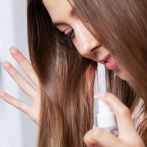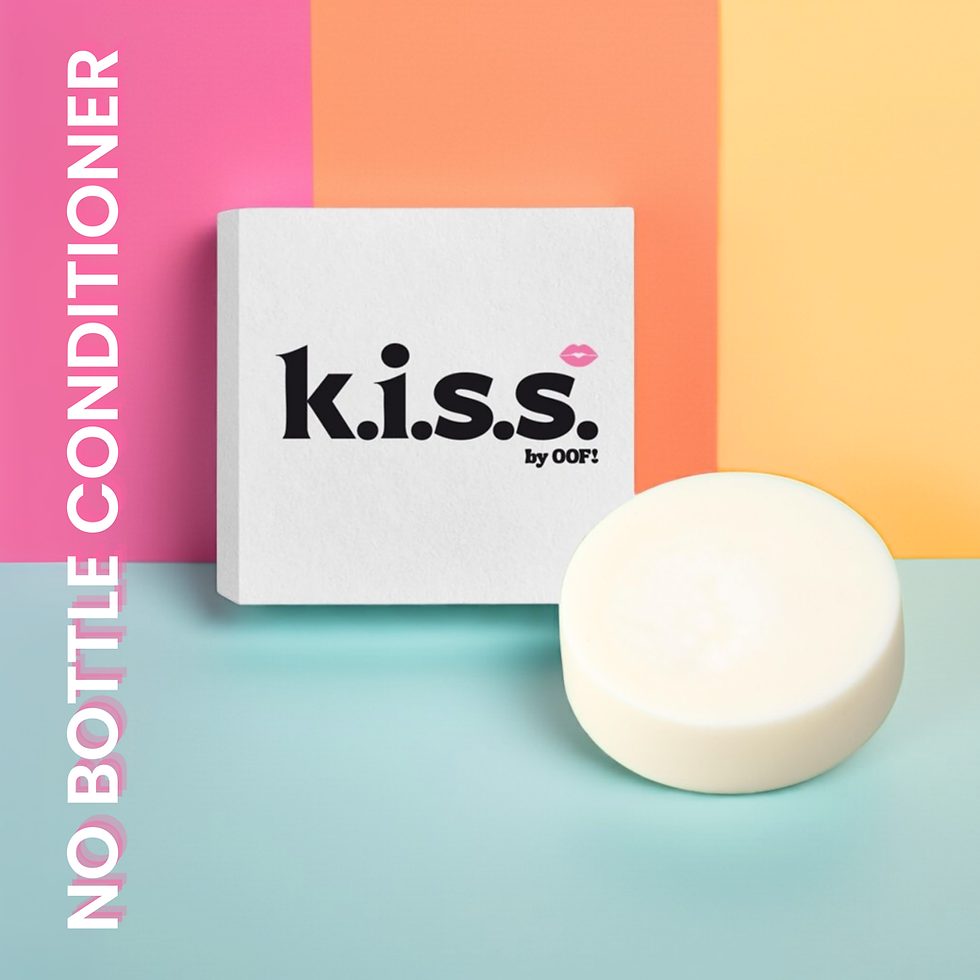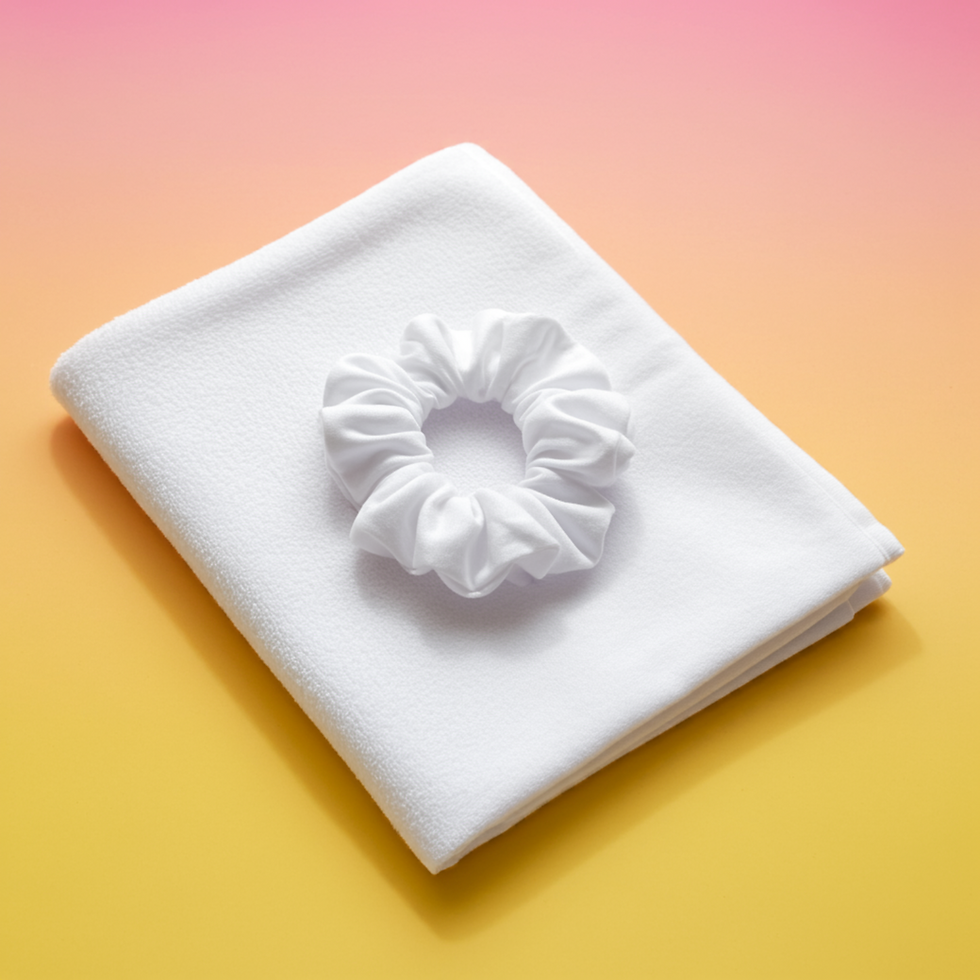Hair Growth: Could Your Hair Care Routine Be Sabotaging Your Hair Health?
- OOF!

- Jun 26, 2024
- 10 min read
Updated: Jan 6
It’s the small habits that can make or break your strands. Let's fix that!
When it comes to getting and keeping our hair healthy and maximizing our hair growth potential, we all struggle with trying to figure out exactly what our hair needs. Different hair types need different hair care. Combine that with the promises of every hair care product on the market, and you are bound to be as confused!

The OOF! team started a comprehensive research project focusing on hair structure, texture, porosity, and the varied responses of different hair types to hair care regimens. Consultations with trichologists and dermatologists were conducted to learn more about scalp and hair health and physiology. We've also researched hair care ingredient chemistry to get the facts behind the hype. —Phew! Ok, enough about us, let's get to your hair!
Many of our articles focus on our findings. We want you to be able to use our knowledge to make wise decisions about your hair care.
This article boils all this information down to the 5 habits that can significantly impact hair health and growth for any hair type. Straight and thin to curly and coarse, these habits might be hurting your hair growth.
Maximize Your Hair's Growth Potential by Steering Clear of These Common Habits That Hinder Hair Growth
Many of us unknowingly sabotage our hair growth with everyday habits and products that promise results but deliver damage. From shampoos laden with sulfates to the towels we use to dry our hair, these seemingly harmless choices can wreak havoc on our hair health.
Keep Reading! We are uncovering all the hidden culprits—silicone-laden products, the absence of scalp massages, and the neglected ritual of hair oiling—they all might be stunting your hair growth. Ready to transform your hair care routine and unlock your hair’s full potential? Let's get into it!

Enhance Hair Growth and Scalp Health by Steering Clear of Sulfates in Hair Products
Sulfates are commonly found ingredients in shampoo. These include sodium lauryl sulfate and ammonium lauryl sulfate. Sulfates are not inherently bad for you and are considered safe, non-toxic, and biodegradable. So what's the problem? Sulfates can be safely used and are great for clarifying the hair of product buildup. These strong detergents certainly remove dirt, oil, and product buildup from the hair, but they can also be extremely harsh on the scalp and hair strands.
Sulfates Can Strip Natural Oils
The foaming action created by sulfates gives us that thorough cleanse that's "squeaky clean", but this also means that your hair and scalp are stripped of its natural oils. These natural oils, known as sebum, play an important role in maintaining the health and hydration of the hair and scalp. Stripped of its natural oils, the hair may become brittle, prone to breakage, and lack shine.
Sulfates and Skin Sensitivity
Excessive use of sulfate-containing shampoos can lead to dryness, frizz, and even scalp irritation for some people. If you have sensitive skin or are prone to conditions like eczema, you may find that sulfates exacerbate your symptoms.
Use Your Sulfate Shampoos for Clarifying
—But don't just throw those sulfate-containing shampoos away! A good sulfate shampoo cleanse is beneficial every once in a while if you feel like you have product buildup, over-conditioned hair, or if you've used any products with silicone in them. We'll get to silicone shortly!
Alternatives to Shampoos Containing Sulfates
If you're concerned about the potential negative effects of sulfates, there are sulfate-free alternatives available on the market. These gentler formulas aim to cleanse the hair without causing as much disruption to the natural balance of oils on the scalp. While sulfate-free shampoos may not lather as much as their sulfate-containing counterparts, they can still effectively cleanse the hair while maintaining its moisture and overall health.
A Note On Behntrimonium Methosulfate
—Note: Many healthy shampoos contain Behentrimonium Methosulfate which, despite it's name, is not a sulfate! It is derived from colza or rapeseed oil, this salt and conditions the hair by detangling and providing slip without stripping oils.
Sulfates like sodium lauryl sulfate (SLS) and sodium laureth sulfate (SLES) are derived from sulfuric acid, containing a sulfate group (SO₄²⁻). Behentrimonium Methosulfate, on the other hand, is a quaternary ammonium salt, with a different chemical structure that does not include a sulfate group.

Stop Using Those Terry Cloth and Microfiber Towels to Dry Your Hair
So, this one is near and dear to our hearts since this is what led us to launch OOF! My naturally wavy/curly hair had been put up in a turban using a terry cloth bath towel for years. I never thought anything of it, I mean, how much can a towel hurt your hair? Well, it turned out that it had a huge effect! I started using a t-shirt and noticed the difference pretty quickly. I had way less frizz, and after a few months, way less breakage too.
Terry Cloth and Microfiber Towels Have a Large Surface Area
Terry cloth towels, commonly used for drying hair, can be rough on the hair cuticles, leading to frizz and breakage. Similarly, while microfiber towels are designed to absorb water quickly, they can also have a large surface area which can create friction that damages the hair strands.
Instead of using terry cloth or microfiber towels, consider switching to a gentler option like a soft cotton t-shirt or a cotton t-shirt hair towel for drying your hair. These alternatives have a very low surface area so they are much smoother on the hair, reducing friction and minimizing damage.
Try 100% Cotton To Reduce Frizz and Plastic Waste
We also recommend looking for 100% cotton for your t-shirt or t-shirt hair towel. Why? Well, most cotton blends contain synthetics like microfiber and polyester, in short—plastic. Did you know that these microplastics end up in our water supply when we wash them?
Further, they are less breathable than natural fibers like cotton. This can make microfiber and cotton-synthetic blend hair towels less effective in allowing air into the towel for your hair to dry without frizz especially for curly girls following the Curly Girl Method.
How to Use a Cotton T-Shirt or T-Shirt Hair Towel
Using a cotton t-shirt or t-shirt hair towel can help to absorb excess water without causing damage. One popular technique is to scrunch (also called microplopping) the wetness out of your hair using the t-shirt or t-shirt hair towel, which can help to speed up the drying process and reduce frizz. After detangling, simply scrunch (cup and squeeze) your hair with towel to remove moisture.
Another method is to fold the towel into a traditional turban, which can help to gently removes excess water while keeping your hair out of the way as it dries. You can also try the plopping method for wavy and curly hair.
By making this simple switch in your hair care routine, you can help maintain the health and integrity of your hair, leaving it looking and feeling healthier and more manageable in the long run.

Silicone! I Know It Can Be Amazing for Frizz, Just Make Sure You Clarify
No matter how healthy my hair is, it has a tendency to look dry and have a lot of frizz, especially in high humidity. My hair has a pretty high porosity, so I lose moisture quickly. Silicone is one of my favorite ingredients in hair products for both appearance and manageability. Silicone coats the hair shaft, creating a smooth, sleek surface, which makes hair look shinier and healthier by reflecting light more effectively. It also helps to reduce frizz and flyaways by sealing the hair cuticle, making it especially beneficial in humid conditions.
Silicone Sounds Great, So What's the Problem?
However, silicone will accumulate on both the hair strands and the scalp, forming a barrier that hinders the absorption of essential moisture and nutrients. This build-up can lead to various issues such as dryness, dullness, and lackluster appearance of the hair.
Over time, using silicone hair products may also weigh down the hair, making it look flat and lifeless. Furthermore, blocked follicles due to silicone accumulation can impede healthy hair growth and potentially contribute to scalp issues like itchiness or dandruff.
I Refuse to Live Without Silicone, So Now What?
No worries. It's really just something to be aware of and take steps to avoid the downsides. If you decide you can't live without the silicone, just make sure you use a clarifying shampoo (sulfate shampoo) to remove the residue on occasion to maintain the health of your hair and scalp. I personally switched to a sealing oil (more below), but before the switch I would do this about once a week at the same time I did my weekly hair oil treatment for scalp and hair.
What You Can Use Instead of Silicone: Hair Oil
Hair oils, specifically sealing oils, can be your new hair BFF for smooth and shiny hair. Sealing oils will function the same as silicone, sealing moisture into the hair shaft. They contain molecules that can form a protective barrier on the outer layer of the hair, locking in that moisture.
Sealing oils do not necessarily add moisture to the hair but rather help to retain the moisture that is already present. Common sealing oils include lightweight oils such as jojoba oil, grapeseed oil, and argan oil.

The Importance of Scalp Massagers In Your Hair Routine for Hair Growth
Not using a scalp massager could potentially be hindering your hair growth progress. Scalp massage is a beneficial practice that goes beyond just relaxation. It also plays a crucial role in stimulating hair follicles.
Did you know that a healthy scalp may be just as important for growing healthy hair as the external products you use? The scalp is where our hair follicles emerge, so the condition of the scalp can determine the quality and quantity of hair our growth.
The Benefits of Scalp Massage for Hair Health and Growth
Giving your scalp a nice massage helps get the blood flowing, making it easier for important nutrients to reach your hair follicles. These nutrients are key for strong hair growth and keeping your hair healthy. Adding a scalp massager to your hair routine can really boost the benefits of your hair growth efforts and keep your scalp and hair in top shape.
Several studies have investigated the association between scalp health and hair growth, and their findings tell us that scalp health and healthy hair go hand in hand. One study found that regular scalp massage can increase hair thickness by inducing stretching forces on dermal papilla cells which are vital for the function of the hair follicles. Another study showed that scalp massage enhances scalp blood circulation, promoting nutrient delivery and oxygenation, creating an ideal environment for hair growth. These findings highlight the benefits of scalp massage for hair health and growth.
What's the Best Scalp Massager to Use?
Keeping silicone scalp massagers clean and well-maintained is simple. Due to their natural resistance to bacterial growth, they can be easily washed with warm water and mild soap, making them a hygienic choice for frequent use.
The flexibility of silicone bristles allows for gentle stimulation of the scalp without causing any damage to the hair or scalp. This is particularly beneficial for those with sensitive scalps or fine hair, as it minimizes the risk of irritation or breakage.
Silicone bristles are super flexible, so they give your scalp a nice massage without causing any damage to your hair or scalp. This is great if you have a sensitive scalp or fine hair because it helps prevent irritation and breakage.
How do I Use a Scalp Massager For Hair Growth?
How you choose to use a scalp massager is really up to you! You can use it on dry hair without oil for a quick massage (I do this every morning), or you can use hair oil for additional benefits.
You can do massage with oil once a week on dry hair so that you can let it stay on your hair for a few hours/overnight, or on wet hair before beginning your cleansing regimen. Start by applying a small amount of your favorite hair oil or serum to your scalp. Make sure you're using the best hair oil for your hair type. Gently massage the scalp in circular motions, focusing on areas where you want to encourage hair growth. This massage action helps to increase circulation, which in turn delivers more nutrients to the hair follicles, promoting healthier and stronger hair growth.

Don't Skip on Hair Oiling for Hair Health and Growth
Using hair oil regularly benefits the health of your hair and scalp and can mean better hair growth too. A key benefit of using hair oil is its ability to nourish and hydrate the hair shaft, preventing dryness and breakage. Hair oil forms a protective shield that locks in moisture, safeguarding against harm caused by heat styling and environmental pollutants.
What Are the Benefits of Hair Oiling?
Hair oiling can calm the scalp and alleviate common scalp issues such as dryness, itching, and dandruff. The hydrating properties of hair oil can help to balance the scalp's natural oil production, reducing excess oiliness or dryness. Regular use of hair oil can also improve blood circulation to the scalp, promoting healthy hair growth.
Using hair oil can also help to detangle and soften the hair, making it easier to manage and style. It can also enhance the shine and gloss of your hair. Given its numerous benefits, integrating hair oil into your hair care routine is an excellent method to improve the overall health and appearance of your hair.
Choosing Hair Oil for Your Hair Type
Choosing the right oil for your hair type is essential to maximize the benefits of hair oiling. Different oils offer various properties that cater to specific hair types. For example, coconut oil is known for its ability to penetrate the hair shaft and prevent protein loss, making it ideal for those with dry or damaged hair. On the other hand, argan oil is rich in antioxidants and vitamins, making it a great option for nourishing and protecting the hair from environmental damage.
How Often Should I Oil My Hair and Scalp?
Incorporating a regular hair oiling routine into your hair care regimen can lead to significant improvements in the overall health and appearance of your hair. Whether you prefer to oil your hair overnight or just before washing, the key is consistency. By dedicating time to pamper your hair with nourishing oils, you can achieve stronger, shinier, and more resilient hair. Once every week or two is all you need to notice the advantages of hair oiling.
Ready to Transform Your Hair Care Routine Hair Health and Growth?
Are you ready to take your hair care routine to the next level? We've uncovered some crucial habits that might be sabotaging your hair health and growth, and now it’s time to make some positive changes! Say goodbye to sulfates, ditch those rough towels, and embrace healthier alternatives like our OOF! t-shirt hair towels.
Pamper your scalp with a relaxing massage using our cute, heart shape silicone scalp massager, and nourish your hair with sulfate-free shampoo and conditioner bars along with our luxurious hair oil serums.
Let’s work together to transform your hair care routine for optimal growth and health. What changes are you making to your routine? Share your thoughts in the comments below and let’s support each other on this journey to beautiful, healthy hair!


















































